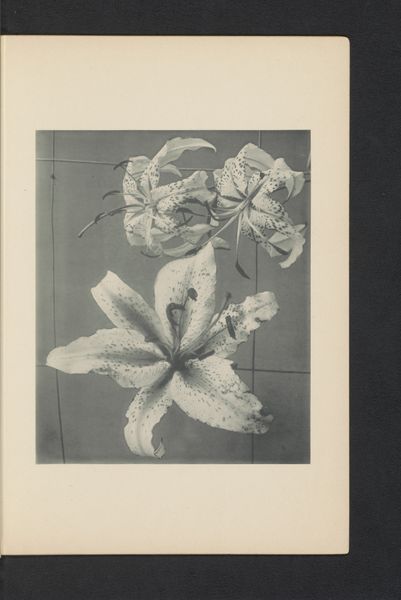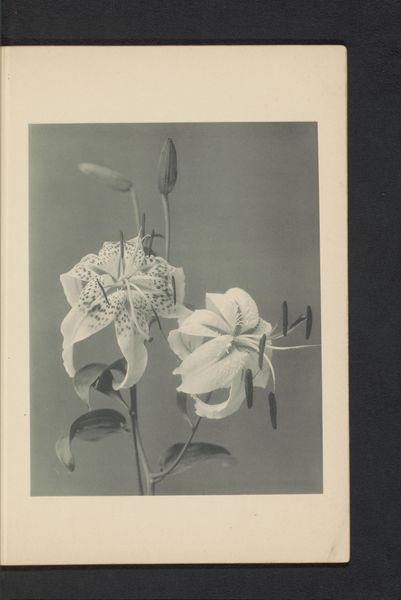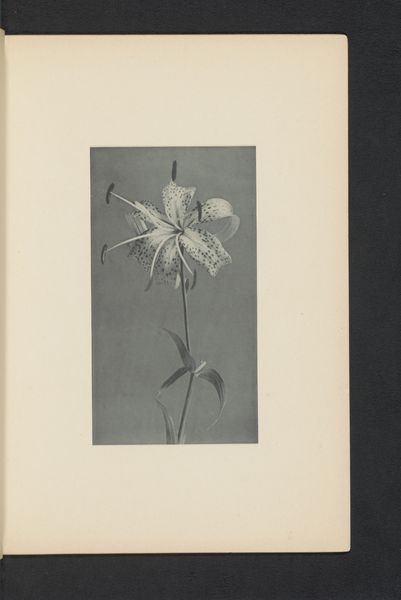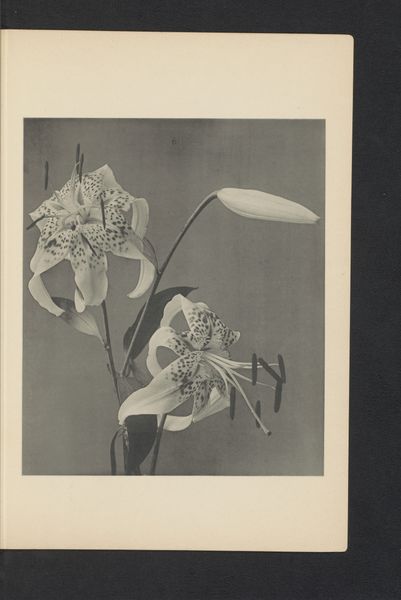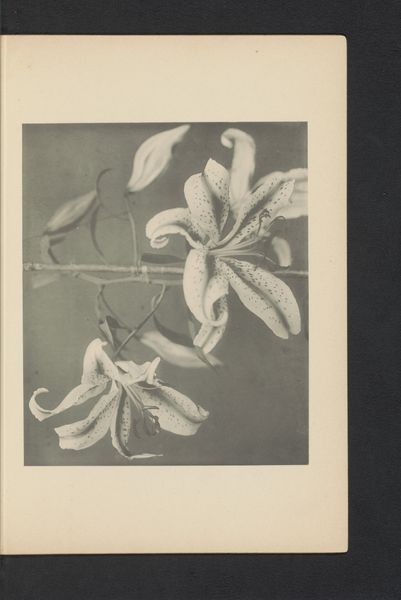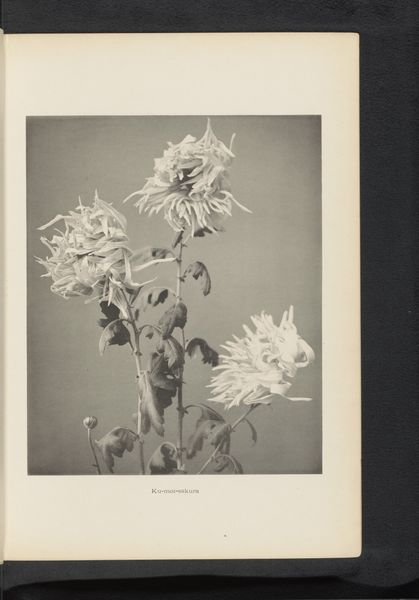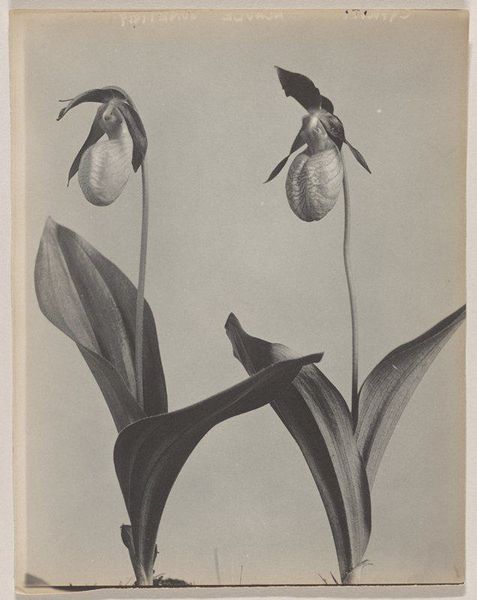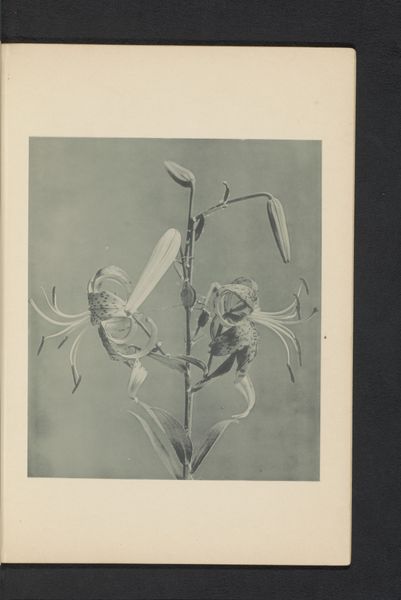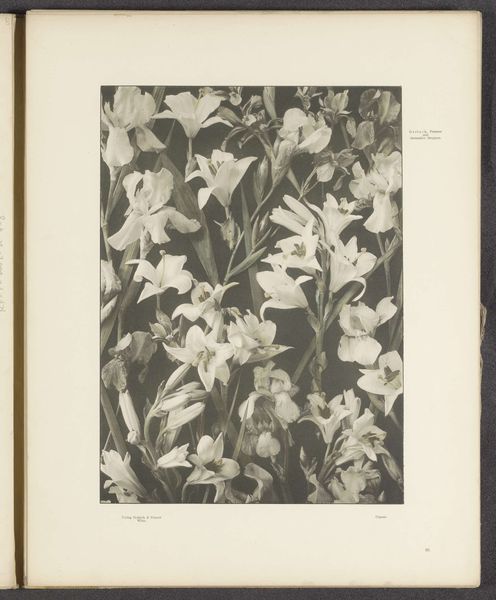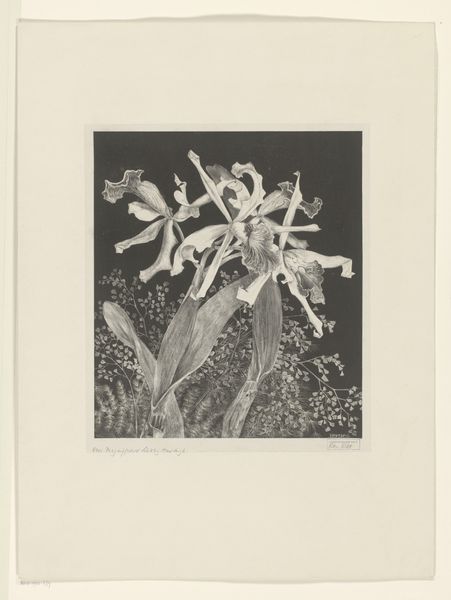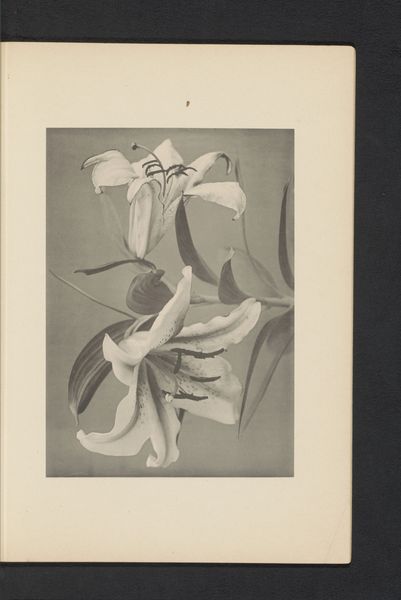
print, paper, photography, gelatin-silver-print
#
still-life
# print
#
paper
#
photography
#
gelatin-silver-print
Dimensions: height 214 mm, width 218 mm
Copyright: Rijks Museum: Open Domain
Editor: Here we have Kazumasa Ogawa's "Japanse lelie", a gelatin silver print dating back to before 1895. It’s a close-up of a lily, and it feels so quiet and still, almost meditative. The monochrome adds to that sense of timelessness. What captures your attention most about this piece? Curator: Ah, a flower captured in time! The simplicity is deceiving, isn’t it? To me, this photograph is like a whisper from the late 19th century, echoing with Japonisme, that Western fascination with Japanese art and culture. Notice how the lily isn't just *any* flower; it’s meticulously arranged, almost like a portrait. Does that symmetry and careful placement tell you something about Ogawa’s perspective? Editor: I hadn't thought of it as a portrait, but that makes sense! The way it’s centered, it does have that feeling. So, is the ‘Japonisme’ influence visible in more than just the title? Curator: Absolutely! It’s in the intentional composition. Japanese art often emphasizes negative space and a kind of serene detachment. The dark backdrop isolating the bloom… it’s less about botanical accuracy and more about capturing an essence. Do you find it compelling, that blending of cultures and purposes? Editor: I do! Knowing the Japonisme connection adds another layer of meaning; it makes it more than just a flower picture. It’s a statement, almost. I definitely appreciate it more now. Curator: Exactly! It's like a haiku, distilling a moment of beauty with intention and meaning. Sometimes, the most impactful art speaks softly, doesn’t it? Editor: It definitely does. This makes me want to look at all still-life photography with fresh eyes!
Comments
No comments
Be the first to comment and join the conversation on the ultimate creative platform.

